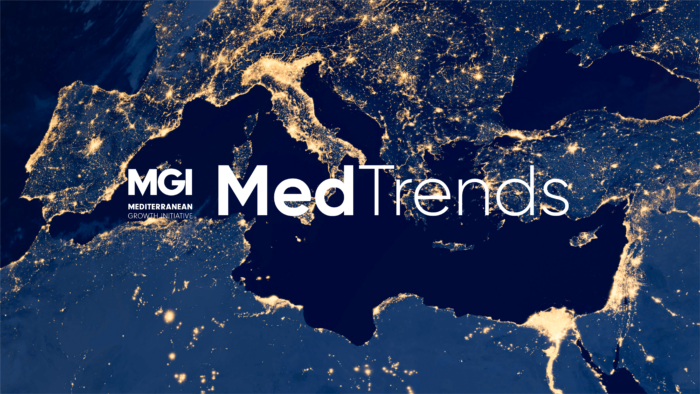How significant is the trade in goods in terms of economic activity? How has this changed within the Mediterranean region since 2012? This analysis explores intra-Med trade in goods as a percentage of each sub-region’s GDP, providing insights into how the landscape has shifted from 2012 to 2022.
The table below shows the changes in intra-Med trade over this period. Positive values indicate that in 2022, trade in goods between the sub-regions makes a more significant contribution to sub-regional GDP compared to 2012. Conversely, negative values mean that in 2022, trade in goods between the sub-regions makes a smaller contribution to sub-regional GDP than in 2012.
On average, trade in goods between the Med sub-regions comprises a greater share of economic output in 2022 versus 2012. The most significant shifts, whether positive or negative, occurred in trade with the EU Med countries.
In more detail, trade between EU Med countries showed the greatest increase as a percentage of economic output. Similarly, trade between EU Med and European non-EU countries also comprised a greater share of economic output in 2022 compared to 2012. On the other hand, the Levantine and North Africa experienced the greatest decline in trade with EU Med countries relative to their GDP.
Note: Analysis produced by Alma Economics based on data from the UN Comtrade database. Due to incomplete data for 2023, we conduct our analysis up until 2022. Values show the change in percentage points of trade as % of sub-regional GDP from 2012 to 2022 and include trade only for goods. The reporting sub-regions are denoted in the rows. The Mediterranean sub-regions are defined as follows: Levantine (Israel, Lebanon, State of Palestine, Syria), North Africa (Algeria, Egypt, Libya, Morocco, Tunisia), European non-EU (Albania, Bosnia and Herzegovina, Montenegro, Turkey), and EU Med (Croatia, Cyprus, France, Greece, Italy, Malta, Slovenia, Spain). Algeria, Libya and Syria are excluded from this analysis as there is a lack of available data.
For more information and to explore data relating to the Mediterranean, visit www.mgi.online




